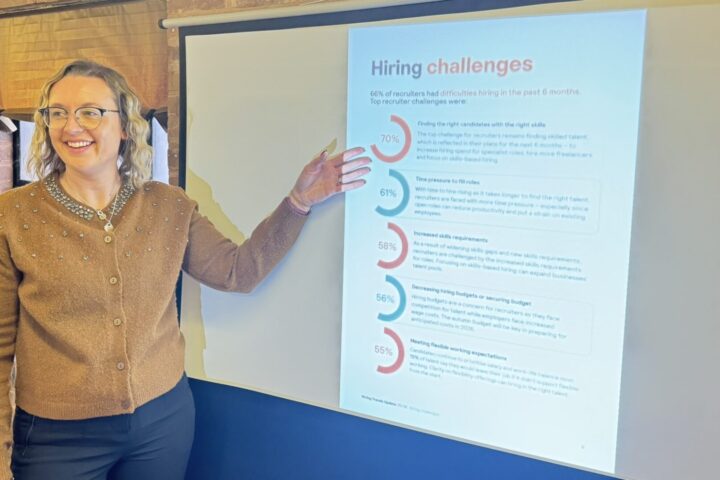Care workers and software developers were the most common full-time jobs for women and men in the UK, according to Ciphr’s analysis of Office for National Statistics (ONS) data.
Care workers made up the biggest full-time workforce overall, with over 501,400 employees in the year to December 2024, or about 2.3% of the UK’s 21.7 million full-time employees.
Programmers and software development professionals followed closely with 487,000 full-time staff, covering 127 job titles.
In London, the South East and East of England, more people worked in programming and software development than any other job.
Secondary school teachers were the third most common full-time job, with 385,000 employees.
Office administrators and clerical assistants totalled 369,100, while sales accounts and business development managers came to 319,700, and financial managers and directors made up 311,900.
Warehouse operatives stood at 276,800, and primary education teaching professionals at 268,400.
Other significant groups included other nursing professionals (265,300), large goods vehicle drivers (250,300), and business and financial project management professionals (247,600).
Book-keepers, payroll managers and wages clerks had 243,500, sales and retail assistants 242,800, and managers and directors in retail and wholesale 242,100.
Finance and investment analysts and advisers stood at 229,200, IT managers 228,100, marketing, sales and advertising directors 209,900, nursing auxiliaries and assistants 198,400, higher education teaching professionals 194,700, and human resource managers and directors 192,500.
Analysis of the top 10 jobs held by women and men showed little overlap.
Only secondary school teachers and financial managers and directors appeared in both lists.
Women made up 42% of the full-time workforce but only 20% of it professionals, and 74% of health professionals.
Men accounted for 58% of the full-time workforce, holding 91% of skilled trades roles and 33% of administrative and secretarial jobs.
The jobs with the most full-time female employees were care workers and home carers, administrative and clerical assistants (other administrative occupations n.e.c.), other nursing professionals, and primary and secondary education teaching professionals.
For men, the largest groups were programmers and software development professionals, large goods vehicle drivers, warehouse operatives, sales accounts and business development managers, and financial managers and directors.
Gender segregation in jobs continued to affect pay and career progression.
The UK gender pay gap for full-time employees stood at 7% in 2024, down from 14.5% in 2004.
Roles with more women, such as care work, administration and nursing, remained undervalued.
Ciphr said ways employers could address gender pay differences included: introducing regular equal pay audits and pay transparency policies, increased investment in diversity and inclusion training to eliminate bias in recruitment and promotion processes, and greater access to flexible working arrangements for all.
















